Evidence from the last few weeks shows that, despite some recent progress (see here for example), there is still an extensive failure to implement access rights in our National Parks. This is particularly worrying because our National Parks are the best resourced Access Authorities in Scotland and have had a statutory duty to promote public enjoyment of the countryside since they were created over 15 years ago. This post takes a look at the issues. I am particularly grateful to readers who have notified me of issues – not all are featured here and there is more to come!
Cambusmore Estate, Callander
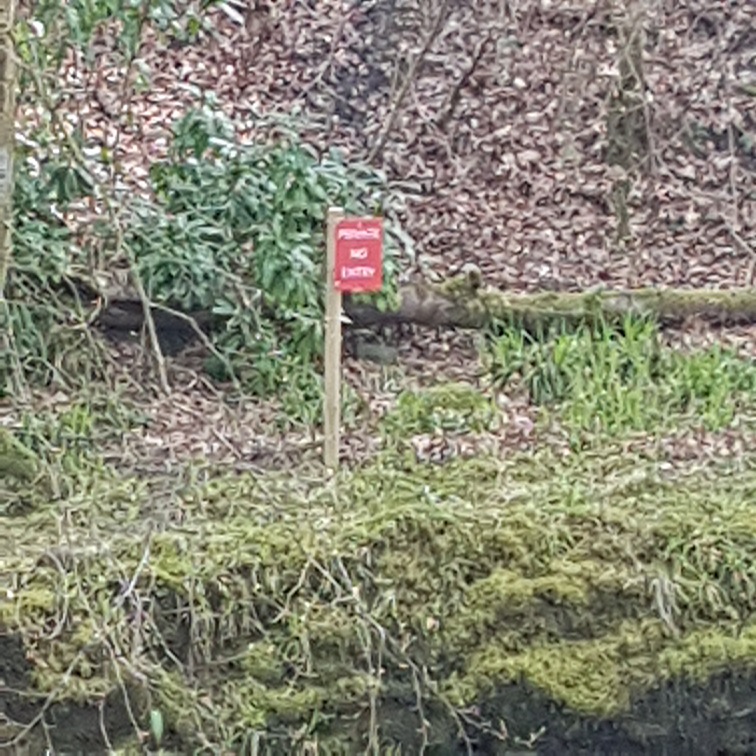
Private no entry signs should, following our access legislation, have become a thing of the past. Certain land is of course exempt from access rights but there is no obvious reason why this bank should be exempt. If there is a reason and a sign was needed to tell the public, it should have explained why. Instead the sign gives the message that there is no entry to private land. That is contrary to access rights and I will write to the LLTNPA access team and ask them to remove it.
One wonders how many LLTNPA staff have passed this sign and failed to report it? Our National Parks should have been showing a lead on educating all their staff about access rights.
Glen Croe, Arrochar
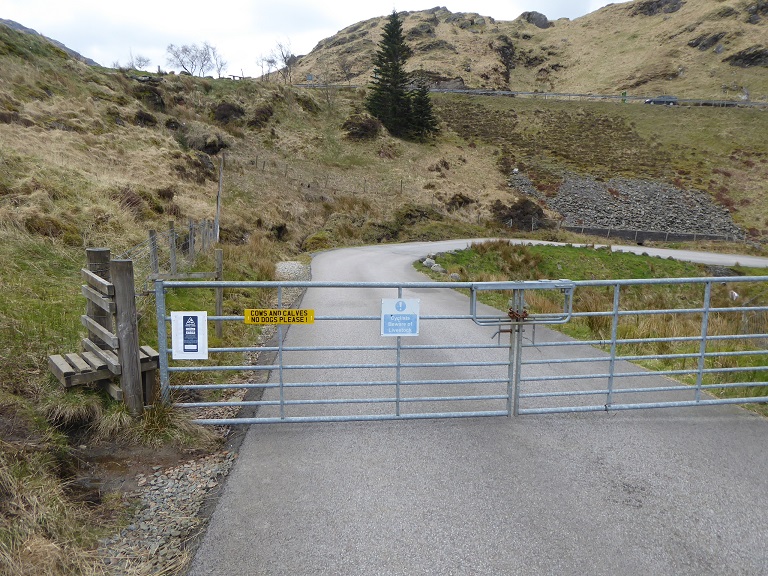
Ten days ago I took the old military road from the Rest and Be Thankful to close to Arrochar. A significant amount of public money has been spent upgrading this in order to provide an alternative route when the A83, as it cuts across the steep south face Beinn Luibhean, is blocked by landslides. This did not work after the landslide last year. Officially this was because some of the landslip material had descended over the military road too. Transport Scotland has however been very reluctant to use the former military road. They only opened it in March as an alternative to a 50 miles diversion after huge public presssure (see here). On the day of my visit it was closed again. Above, while there were long queues of traffic on the A83 where traffic lights had been installed and it had been reduced to one lane. Why Transport Scotland had not re-opened the military road to prevent the jam is unclear but maybe those factors also explain the access problems along the route.
While the upgrade of the military road has destroyed most of its character, when not in use by cars it provides a potentially attractive alternative route to the busy A83 for cyclists. Unfortunately, access is now blocked by three locked gates and, while there are styles alongside, these are not easy to negotiate. Imagine trying to cross these styles if you were cycle touring and had heavy panniers.
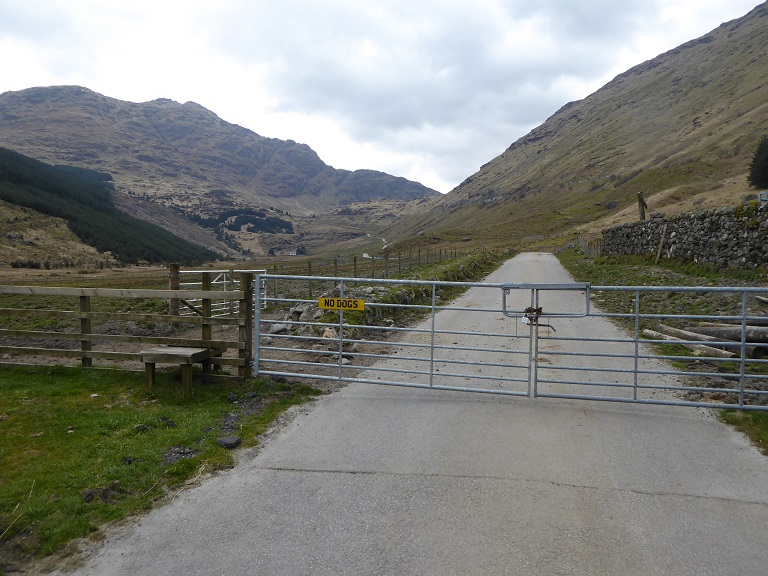
Its not just bikes, however. The farmer clearly does not like dogs on the land. This is also contrary to the Scottish Outdoor Access Code:
The Access Code says:
Access rights apply to people walking dogs as long as their dogs are kept under proper control. Your main responsibilities are:
Farm animals:
- Never let your dog worry or attack farm animals
- Don’t take your dog into fields where there are lambs, calves or other young farm animals
- If you go into a field of farm animals, keep your dog(s) on a short lead or close at heel and keep as far as possible from the animals
- If cattle react aggressively and move towards you, keep calm, let the dog go and take the shortest, safest route out of the field
Now it was Spring, there were calves in neighbouring fields and it appeared the farmer was letting them onto some of the land taken by the road. Technically, therefore, under the Land Reform Act the farmer was within his rights to say “no dogs” for a period. The signs, however, appear to be left up all year which is contrary to the Scottish Outdoor Access Code. Moreover, my understanding is that the former military road is effectively an old right of way and because of this other legal rights come into play. Generally, there is a right for dogs to accompany people along rights of way and, if that is the case here, these signs are doubly unlawful.
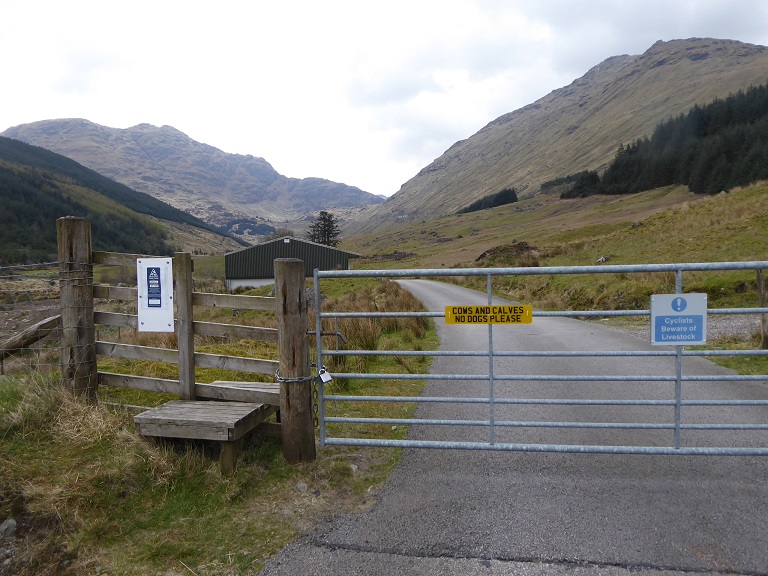
What’s amazing about all of this is that my understanding is two public authorities, Transport Scotland and Argyll and Bute Council, were involved in planning and funding the road upgrade. BOTH have allowed obstructions to be created for walkers and cyclists in the course of that work while NEITHER have done anything to prevent the farmer putting up unlawful signs. Do they have NO appreciation of the law? Again, I will ask the LLTNPA access team to address the issues.
Ardgarten peninsular
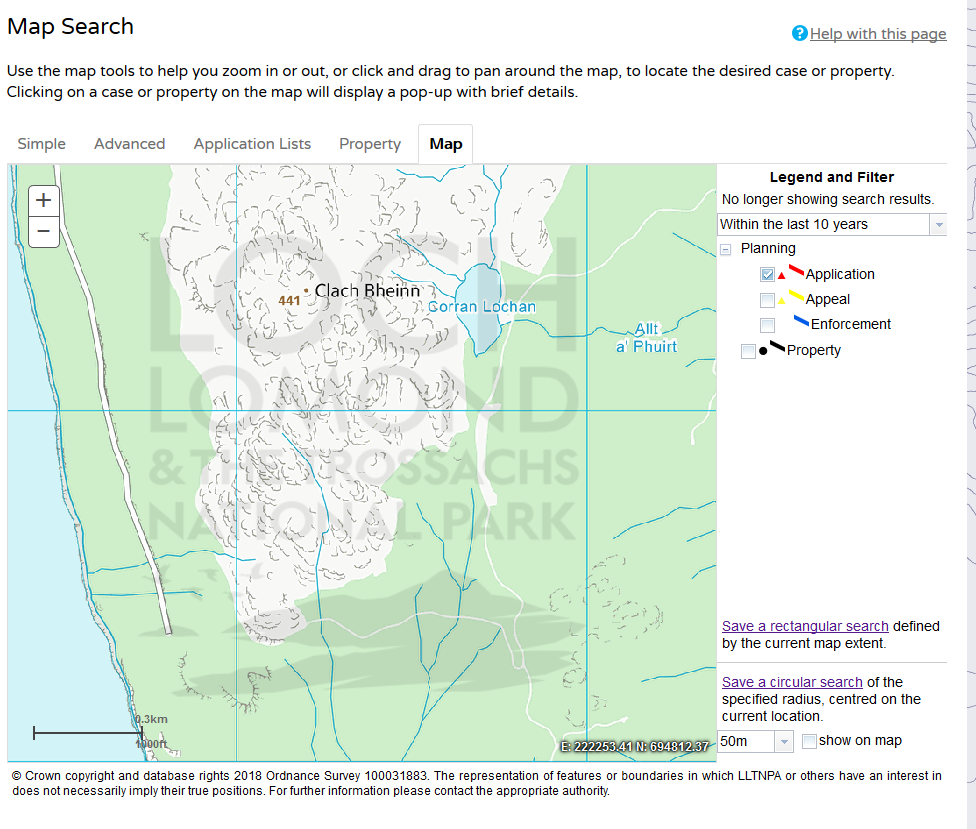
A little further south on the Ardgarten peninsular, a reader sent me this information from the weekend:
“I was cycling around the ardgarten peninsula yesterday 20/04/19 and was alarmed to see the large quarry operations on the dukes pass. The quarry works is effectively closing the main dukes path forest road used for cycling and walking, just below Corrie lochan. There is no alternative route or advice on safe alternative. On speaking to site workers we were allowed to pass the quarry to continue on route, but there is no cordon in places , safely separating walkers or cyclist from quarry work. This is an extremely famous MTB route and well known as part of the new wild about Argyll bike touring route, so sad that access may well be restricted due to the quarry work, surely planning permission should never have been granted for the quarry to be on such a well used public path.”
I am sorry I have no photos but I checked, see above, and there has been no planning application for this quarry. Its almost certainly being undertaken by Forestry Commission Scotland as part of work to expand forest tracks in this area and may have come under the Prior Notification System, which allows new forest roads and quarries to be created without full planning permission. While the LLTNPA may not have been made aware of the work – another thing to report – what should have happened is that before going ahead, FCS should have put adequate measures in place to maintain safe access or create an alternative route around the works. That appears not to have happened. Another failure to uphold access rights.
Advice to visitors in the Cairngorms National Park
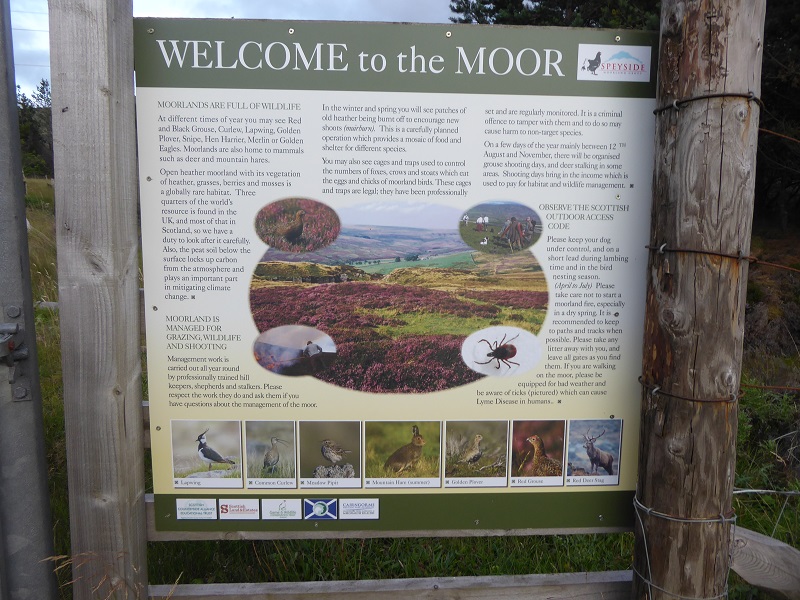
After Dave Morris’ post (see here), both Mountaineering Scotland and Ramblers Scotland contacted the Cairngorms National Park Authority to express concerns about their news piece on 2nd April which had asked for all dogs to be kept on a lead and for walkers to keep to the path. That piece has now been changed (see here) to reflect the Scottish Outdoor Access Code: the reference to all dogs needing to be on a short lead has been modified and the request for walkers to keep to the path has been removed. That is all excellent and congratulations are due to both MS and RS for taking this up and to CNPA staff for correcting the information they had put out.
Three days ago, however, Xander McDade, the CNPA Convener issued another blog piece under the heading Tread Lightly (see here). While its very positive the CNPA has responded from the top – a contrast to the Loch Lomond and Trossachs National Park Authority – it appears from Xander’s piece that the CNPA are still a bit defensive and still do not fully appreciate the issues:
“Some people have taken this advice from the Park Authority as us trying to “erode their access rights. Nothing could be further from the truth, but with access rights come responsibilities. These responsibilities are enshrined in the Scottish Outdoor Access Code, the manual on how to be a responsible access taker. No one wants to see a lamb fatally injured by dogs or a mother hen looking for its lost chicks.”
Quite right about SOAC and dogs, but he goes on to say:
“As a National Park with over half of the Park protected with international designations because of precious habitats and rare wildlife, it seems only sensible to me that there may be times when people are asked to take extra care to avoid inadvertently disturbing critically rare and endangered species by using paths and following the local advice provided by signage”.
The problem is NOT that there are times when people are being asked to take special care or even that in specific circumstances that they are asked to do this by keeping to the path. Its that the CNPA is asking people to follow local signage.
By far the most common “local” advice to be found in the National Park are the “Welcome to the Moor” signs (above). There are dozens, if not hundreds, which are endorsed with the CNPA logo. These signs recommend people should keep to the path at ALL times. The CNPA has strengthened that recommendation into something almost obligatory by asking people to follow what is said in the local signage. In effect the CNPA is endorsing the restriction of access to ALL moorland areas. These comprise 43% or so of the National Park.
The wording in Xander McDade’s news piece is not just an accident – I suspect it came from staff. It is repeated in a video on their website (see here) and was re-issued by Active Cairngorms in their newsletter yesterday, again under the heading Tread Lightly:
It’s an important time of year for our ground nesting birds and with a great variety of species in the Cairngorms National Park it’s crucial that we all tread lightly. If walking with a dog in the Park we are asking you to be particularly careful. Please use paths in sensitive areas and keep your dog on a lead, or at least, under very close control. For all other users – walkers, bikers, horse riders – please be mindful of your potential impact on ground nesting birds and follow on site guidance.
The “onsite guidance” on moorland is to keep to the path. That is NOT about treading lightly, which everyone should support, its about restricting where people can go. The advice is therefore contrary to access rights.
There is a simple answer to this. The CNPA must STOP asking people to follow local guidance so long as it includes general requests to visitors to keep to the path. They then need to tell landowners that they need either to delete the offending advice from the Welcome to the Moor signs or remove these signs entirely. The CNPA appears still to be in deep denial that the real purpose of the Welcome to the Moor signs is not to protect sensitive wildlife, most of which has been destroyed by the ever increasing intensification of grouse moor management. Its to reduce the chances of visitors witnessing what is really happening on grouse moors, particularly the persecution of wildlife.
Plenty to campaign about! When you see anything that obstructs access rights, please complain and, if its in a National Park, do please copy parkswatch in.